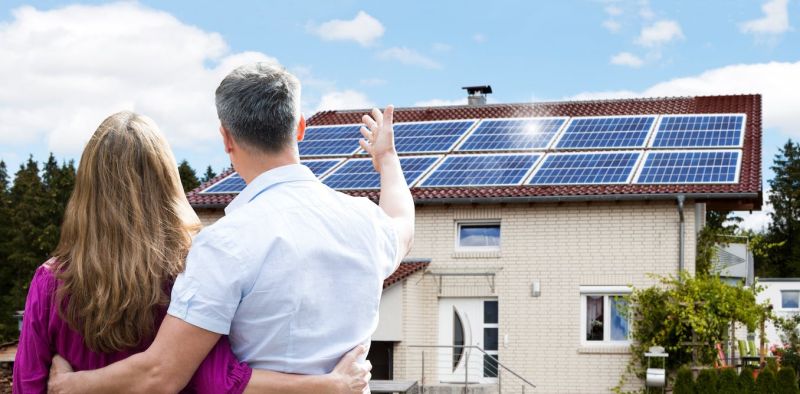The world is witnessing an increasing shift towards renewable energy, and residential distributed photovoltaic (PV) systems are becoming a prominent solution. These systems enable homeowners to generate their own clean energy from the sun. This article explores the concept of residential distributed photovoltaic systems, their benefits, and their increasing popularity in the current energy landscape.

Learn about residential distributed photovoltaic systems:
Residential distributed photovoltaic systems refer to power generation systems installed on residential roofs or properties. It includes photovoltaic panels, inverters and, in some cases, battery storage. These panels capture sunlight and convert it into direct current (DC), which is then converted through an inverter into alternating current (AC) for use in the home's electrical system. Excess energy can be stored in batteries or fed back to the grid for points.
Advantages of residential distributed photovoltaic systems:
1. Energy independence: Through residential distributed photovoltaic systems, homeowners can reduce their dependence on traditional energy sources, thereby achieving greater energy independence. They generate their own electricity, reducing the need to purchase energy from the grid, resulting in potential cost savings.
2. Environmental impact: Compared with traditional energy sources, household photovoltaic systems have significantly lower environmental impacts. They produce clean, renewable energy, reduce carbon emissions and help combat climate change.
3. Financial Return: By generating their own electricity, homeowners benefit from reduced energy bills. Additionally, in countries with net metering policies, excess electricity generated can be fed back into the grid, earning credits or revenue for homeowners.
4. Long-term investment: Installing a residential distributed photovoltaic system is a long-term investment. While initial installation costs can be high, the cost savings from reduced energy bills and potential revenue generation can help pay for yourself over time.
5. Grid resilience: Distributed photovoltaic systems improve the overall resilience of the grid. By decentralizing energy production, they can reduce stress on the grid during peak demand and provide backup power during grid outages, especially when combined with battery storage.
Growing in popularity and adoption:
The adoption of residential distributed photovoltaic systems is increasing due to a number of factors:
1. Reduced costs: The cost of photovoltaic panels and associated installation has decreased significantly in recent years, making residential systems more affordable for homeowners.
2. Government incentives: Governments around the world are offering incentives such as rebates, tax credits and feed-in tariffs to encourage the adoption of residential solar systems. These incentives further contribute to the growing popularity of distributed photovoltaic systems.
3. Technological Advances: Advances in photovoltaic technology have improved the efficiency and reliability of residential systems. Improved panel efficiency and battery storage options allow homeowners to maximize energy production and utilization.
4. Environmental awareness: Growing awareness of climate change and the need for sustainable energy is leading individuals and communities to turn to residential distributed photovoltaic systems as a conscious choice to reduce their carbon footprint.
As the world strives for sustainable energy solutions, residential distributed photovoltaic systems are becoming an effective means for homeowners to generate their own clean energy, achieve energy independence and reduce their environmental impact. Falling costs, government incentives and technological advances are driving increasing adoption of these systems. With their long-term economic benefits and contribution to grid resilience, residential distributed PV systems are undoubtedly a key player in the transition to a green future.
Post time: Dec-04-2023